
The University of North Carolina at Chapel Hill is a public research university in Chapel Hill, North Carolina. Chartered in 1789, the university first began enrolling students in 1795, making it one of the oldest public universities in the United States.

Frank Porter Graham was an American educator and political activist. A professor of history, he was elected President of the University of North Carolina at Chapel Hill in 1930, and he later became the first President of the consolidated University of North Carolina system.
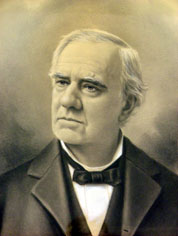
Samuel Field Phillips was a civil rights pioneer, lawyer, politician who served as the second Solicitor General of the United States (from 1872 to 1885). He then took part in the landmark civil rights case, Plessy v. Ferguson.

Rufus Clay Barringer was a North Carolina lawyer, politician, and Confederate brigadier general during the American Civil War.
George Moses Horton, was an African-American poet from North Carolina who was enslaved until Union troops, carrying the Emancipation Proclamation, reached North Carolina (1865). Horton is the first African-American author to be published in the United States. He is author of the first book of literature published in North Carolina and was known as the "Slave Poet".
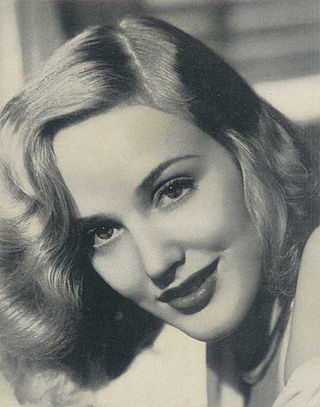
Georgia Carroll was an American singer, fashion model, and actress, best known for her work with Kay Kyser's big band orchestra in the mid-1940s. She and Kyser were married in 1944 until he died in 1985.
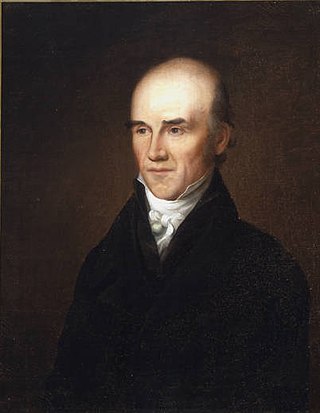
Joseph Caldwell was a U.S. educator, Presbyterian minister, mathematician, and astronomer. He was the first president of the University of North Carolina at Chapel Hill, holding the office from 1804 until 1812, and from 1816 until his death in 1835.
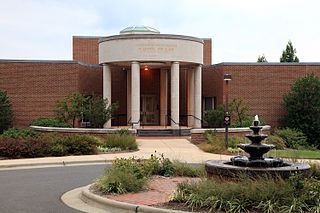
The University of North Carolina School of Law, sometimes referred to as Carolina Law, is the law school of the University of North Carolina at Chapel Hill. Established in 1845, it is among the oldest law schools in the United States and is the oldest law school in the state of North Carolina.
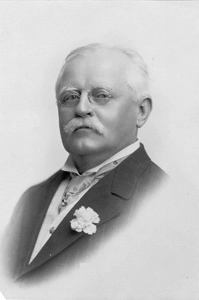
Julian Shakespeare Carr was an American industrialist, philanthropist, and white supremacist. He is the namesake of the town of Carrboro, North Carolina.
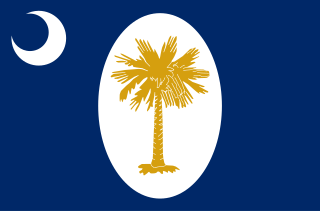
South Carolina was the first state to secede from the Union in December 1860, and was one of the founding member states of the Confederacy in February 1861. The bombardment of the beleaguered U.S. garrison at Fort Sumter in Charleston Harbor on April 12, 1861, is generally recognized as the first military engagement of the war. The retaking of Charleston in February 1865, and raising the flag again at Fort Sumter, was used for the Union symbol of victory.

John Hill Wheeler (1806–1882) was an American attorney, politician, historian, planter and slaveowner. He served as North Carolina State Treasurer (1843–1845), and as United States Minister to Nicaragua (1855–1856).
Edwin Caldwell was an American physician who served patients in Central North Carolina around the turn of the 20th century. Caldwell is credited with discovering one of the first effective treatments for pellagra.

The University of North Carolina at Chapel Hill is a coeducational public research university located in Chapel Hill, North Carolina, United States. It is one of three schools to claim the title of the oldest public university in the United States. The first public institution of higher education in North Carolina, the school opened on February 12, 1795.
John Andrew Jackson was an American abolitionist in the nineteenth century. He was born into slavery on a country plantation in Sumter County, South Carolina. His escape north to Canada may have been one of many slave experiences that inspired Harriet Beecher Stowe's Uncle Tom's Cabin. During the American Civil War, Jackson published The Experience of a Slave in South Carolina (1862) while in Great Britain.

Louis Round Wilson was an important figure to the field of library science, and is listed in "100 of the most important leaders we had in the 20th century," an article in the December 1999 issue of American Libraries. The article lists what he did for the field of library science including dean at the University of Chicago Graduate Library School, directing the library at the University of North Carolina Chapel Hill, and as one of the “internationally oriented library leaders in the U.S. who contributed much of the early history of the International Federation of Library Associations and Institutions.” The Louis Round Wilson Library is named after him.
Jane Evans Elliot, born Jane Smith Evans (1820–1886), was a diarist during the American Civil War who lived on the Ellerslie Plantation outside of Fayetteville, North Carolina. Her writings focus on "the many changes of girl hood, and maiden hood" before, during, and after the Civil War.
William Grimes was an African American barber and writer who authored what is considered the first narrative of a formerly enslaved American, Life of William Grimes, the Runaway Slave, published in 1825, with a second edition published in 1855. Another revised edition was published by one of his descendants in 2008. Grimes escaped slavery by boarding on a ship called Casket, which sailed from Savannah, Georgia to New York City. He then walked to Connecticut from New York City to begin his life as a free man. Grimes lived in Stratford, Norwalk, Fairfield, Bridgeport and Stratford Point alongside New Haven and Litchfield, Connecticut following his escape from slavery. New Haven was where Grimes eventually settled to live out his final days.
Robert Lynn 'Bobby' McMillon was an American traditional ballad singer, musician, and storyteller living in Lenoir, North Carolina. He was a 2000 recipient of the North Carolina Heritage Award.

Elizabeth Wragg Manigault was an American socialite who was prominent figure in colonial South Carolinian society. She was the wife of Peter Manigault, who served as Speaker of the South Carolina House of Representatives and was one of the wealthiest people in British North America.

Mary Berkeley Minor Blackford was an American anti-slavery activist, founder of the Female Auxiliary of the American Colonization Society in Fredericksburg.















